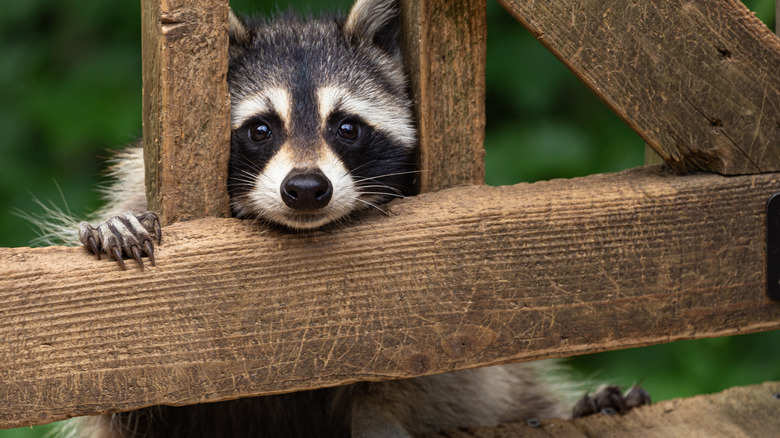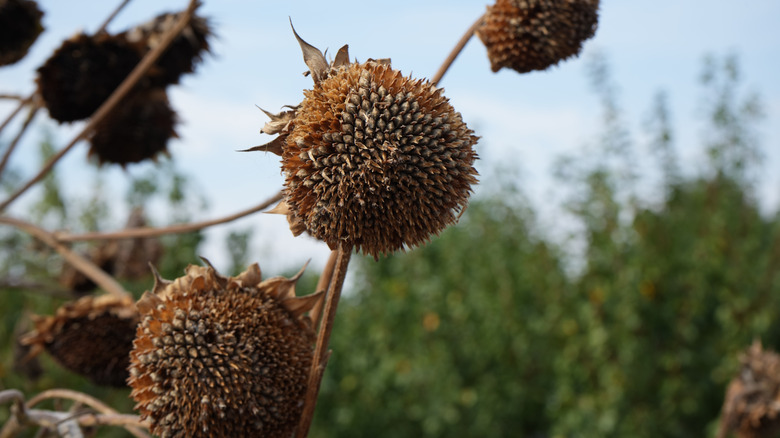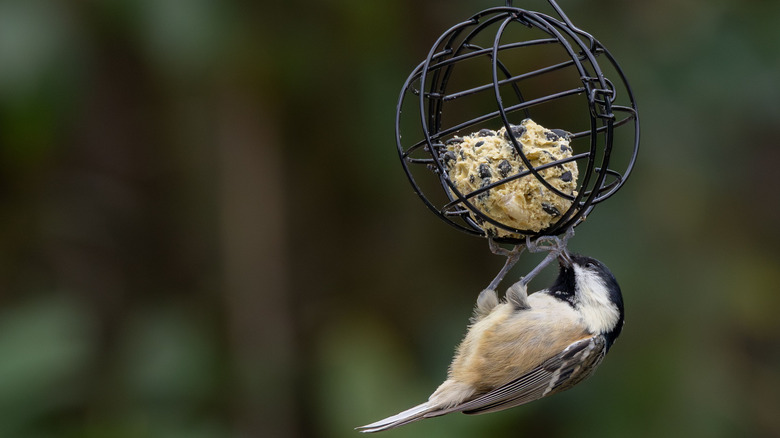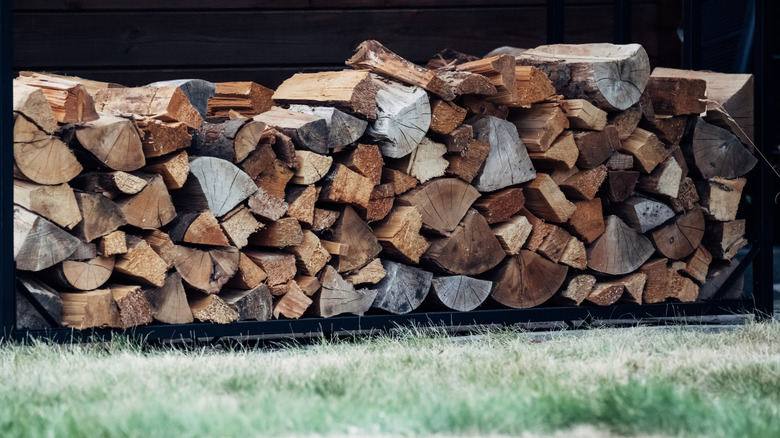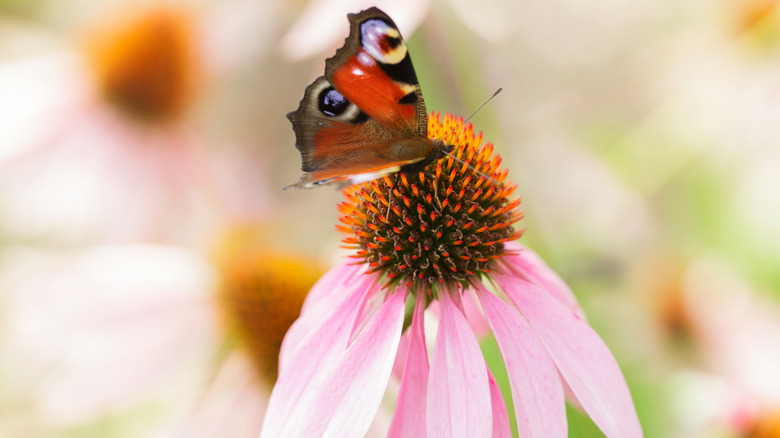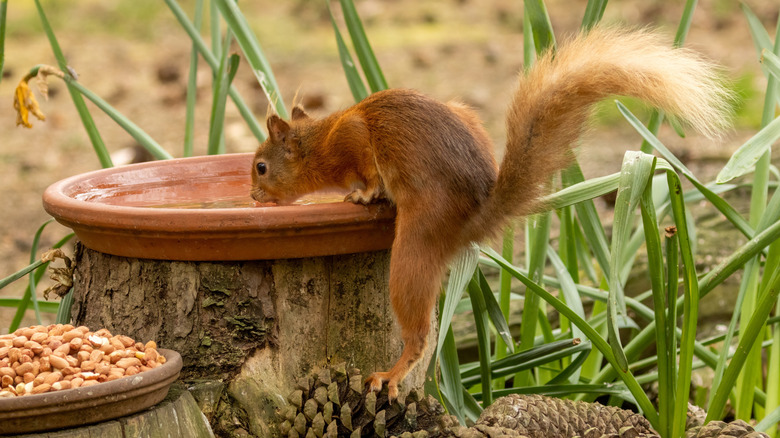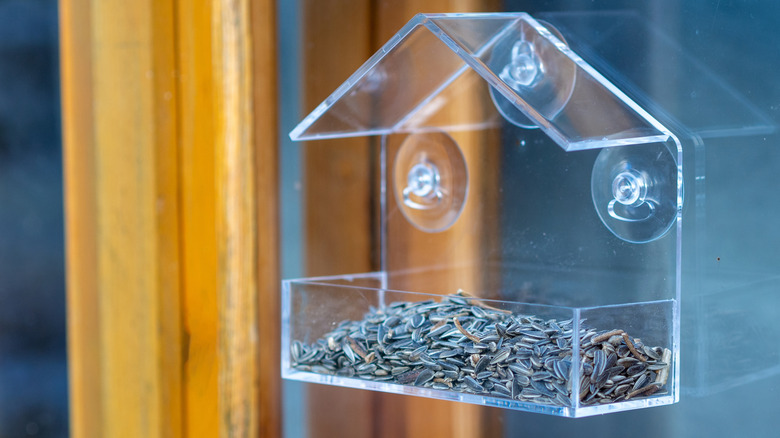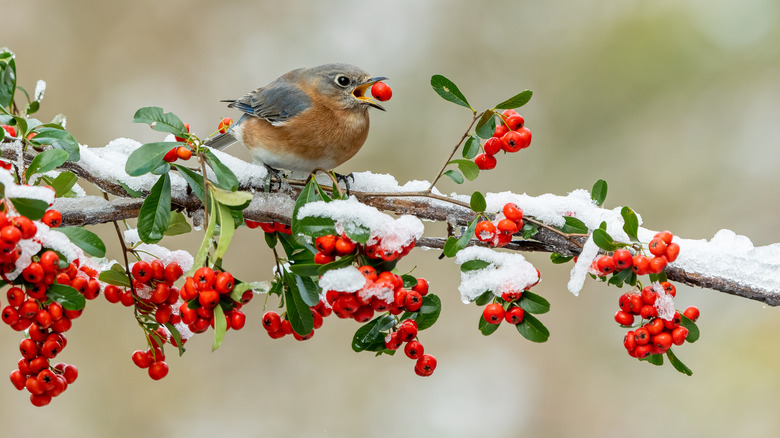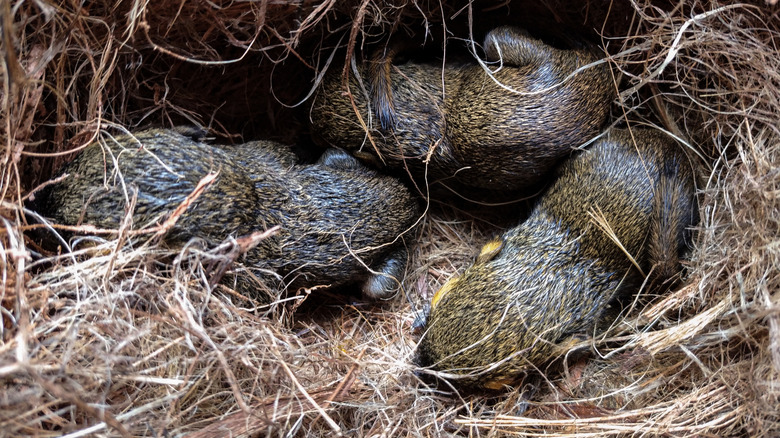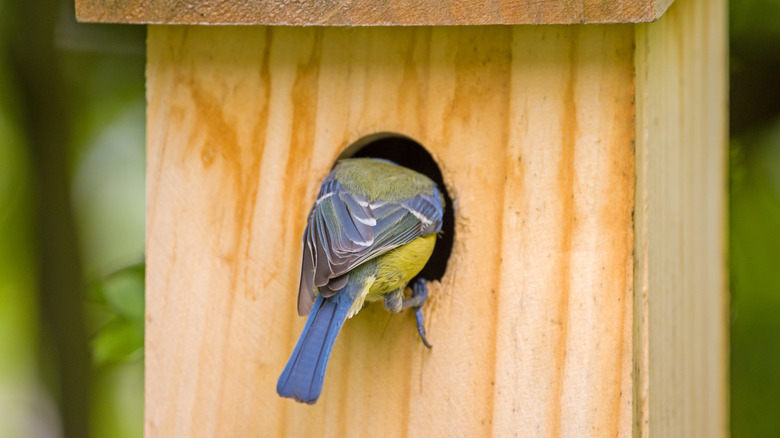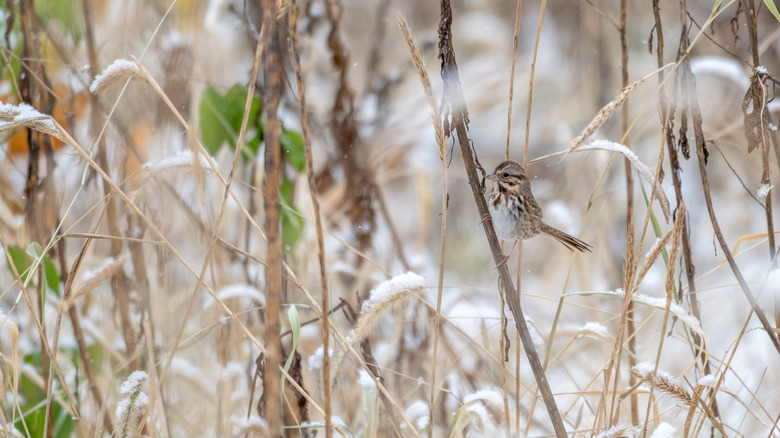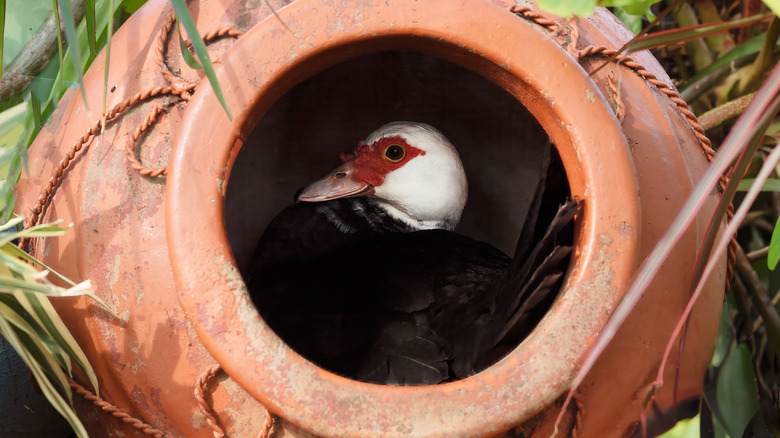15 Ways To Support Wildlife In Your Yard Before Winter's First Frost Hits
You know winter is coming when your yard shifts from bright blooms and bustling wildlife to fallen leaves and cicada song-free nights. Before the first frost, birds, pollinators, and small creatures are busy prepping for the colder temperatures ahead. They're searching for spots that offer shelter from the cold and predators, and where they can safely stash their food. So, if you decide to wind down your outdoor landscape, you might eliminate some of their options. You can support the native wildlife in your yard before winter hits with just a few easy adjustments.
We love pretty much all animals — both wild and tame — so if there's a chance we can give them extra TLC during the winter, we're all in. There's a low-maintenance winter garden trend that's perfect for lazy gardeners like us, and maybe you, too. It's basically about doing nothing at all, like postponing shrub pruning, letting dry leaves pile up, and leaving ornamental grasses long. But there are also proactive things you can do, like adding a heated birdbath to your yard for a consistent water source for birds, squirrels, and other woodland critters. Even filling an empty outdoor planter with straw or leaves for a cozy refuge can make a huge impact on the wildlife community when temperatures dip. If you're looking for ways to maintain your backyard ecosystem, these simple options can transform your yard into a winter sanctuary that hums with quiet activity.
Don't deadhead your plants
While it's super tempting to remove those scruffy seed heads from your garden, hold off until spring because they hold so much potential for wildlife living nearby. Seed heads are a spectacular food source for birds, as well as an excellent shelter for insects. When seeds become more scarce, birds will see your yard as rolling out the welcome mat when you leave your plant heads alone.
Set up a feeder station
When you want an easy way to bring more birds to your yard and fatten them up in time for winter, hang a ball of suet in a convenient location. Suet is a high-energy food made from fat that birds absolutely love, attracting birds like woodpeckers and chickadees. Squirrels and chipmunks will try to get their paws on some, so put it in a high spot or set up a lower station reserved for these little critters.
Don't rake the leaves
Once trees in your yard have released their autumn leaves, you'll be tempted to rake them into a neat pile. But when you want to help protect different wildlife in the upcoming months, you need to rethink that. Leaves give shelter to native insects so they can hunker down when it's cold. These include ladybugs, fireflies, luna moths, and spiders, to name a few.
Make a wood pile
Perfect for throwing a precut log on a fire, a wood pile tucked away in a quiet area of your yard is also a great place for wildlife. Small animals, like chipmunks, squirrels, mice, and rabbits, use it for protection, while insects, lizards, and toads use it to escape the brisk, cold weather. Just be careful when you remove a log from the stack because snakes also like to use the close quarters for shelter.
Heated birdbath
A heated birdbath might sound super posh, but to birds, it's the perfect way to sip fresh water when their usual stomping grounds have frozen over. It works by keeping the water above freezing for birds like chickadees, blue jays, or mourning doves, for example, to stop by your yard. Heated birdbaths are available in a variety of styles and price points for any budget.
Leave ornamental grasses long
There are two good reasons you shouldn't cut back the ornamental grass surrounding your yard before the first frost. For starters, it can be a really pretty addition to your winter garden aesthetic. But the best part is that it offers food and shelter for wildlife during winter. Although you should continue with the annual routine of trimming your ornamental grass, if you can wait until early spring, we're positive the wildlife would thank you.
Plant late-fall flowers
Planting coneflowers (Echinacea purpurea) is a sure-fire way to give birds and pollinators some yummy morsels when their go-tos have gone away until next year. Hardy in USDA Hardiness Zones 3 to 8, you can wait to prune the pretty perennial until late winter or early spring, letting birds and butterflies munch on anything that remains. You won't see the steady stream of the usual summer visitors, but the wildlife-friendly flower will deliver some memorable moments.
Provide a fresh water source
When puddles and ponds freeze during the winter, finding a water source that isn't iced over becomes a challenge for wildlife, like squirrels, rabbits, and possums. So, if you don't want a heated birdbath in your backyard, an easier option is to fill up a shallow bowl with fresh water and leave it outdoors in a sunny spot where little woodland critters can take a sip.
Clean out bird feeders
Make sure your bird feeders are cleaned out for the upcoming winter and stocked with seeds birds won't be able to resist. Birds need to eat more food to stay warm during the winter. That's where sunflower seeds and thistle are always a big hit with birds. If you don't have a bird feeder, you can slap peanut butter on a pinecone and roll it in seeds to give your native wildlife a high-fat treat.
Plant more evergreens
Evergreens give wildlife a year-round haven, so plant them if they aren't part of your current setup. Start by finding the best ones for your USDA hardiness zone, but popular evergreens include pines, spruces, and hollies. Birds can roost in the dense branches and even feed on evergreen berries during the winter. Whether an evergreen tree or shrub, they offer a low-maintenance opportunity to give wildlife a dependable place to call home.
Make a brush pile
Instead of tossing out branches, leaves, sticks, and other woody elements, you can create a brush pile habitat for wildlife. It's an uncomplicated, low-cost way of providing shelter to turtles, squirrels, birds, rabbits, and other tiny creatures who tend to be prey for larger predators. Create piles around your yard near fence lines, behind shrubs, and in areas of the yard with less foot traffic.
Get a roosting box
A roosting box is a cozy shelter that's designed to keep birds warm in the winter by preventing their body heat from escaping. Made with fewer venting holes, a roosting box has a few perches on the inside to accommodate several birds at a time for a cute snuggle sesh, including woodpeckers and bluebirds. Make sure to put it in a location that protects it from wind blasts.
Leave the stalks
One of the best things you can do for your backyard ecosystem is to leave plant stalks standing through winter. Those dried-out stems may look unsightly, but to wildlife, they're a lifesaver. Hollow stalks offer a place for bees, butterflies, and other pollinators to find shelter from the cold weather. Who knows, maybe they'll even stick around when the temperatures get warmer and make your yard the best place to pollinate.
Stuff empty planters
There are plenty of creative ways to reuse plastic nursery pots in your garden, but our favorite is to create a cozy refuge for the native wildlife around your home. Fill them with natural materials, like dried leaves, straw, brush, or anything left over from pruning your garden for birds, squirrels, rabbits, and other furry or feathery creatures. Tuck in some seed heads or dried stalks as a convenient way for wildlife to get their food supply.
Postpone pruning your shrubs
When you want to potentially capture some cute pictures while giving wildlife, like deer, rabbits, squirrels, and birds, a cozy spot to rest, don't trim your shrubs. Those untrimmed branches maintain the natural structure that gives wildlife a safe space from predators and shelter from frigid temperatures. As long as you trim your shrubs before new growth starts to form, you're helping maintain their natural habitat to get them over the winter hump.
